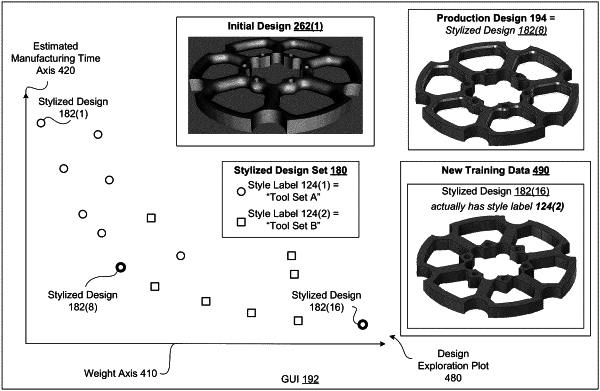| CPC G06N 20/00 (2019.01) [G06F 18/214 (2023.01); G06F 30/00 (2020.01); G06F 30/17 (2020.01); G06F 30/27 (2020.01); G06N 3/088 (2013.01); G06Q 10/06393 (2013.01); G06T 11/001 (2013.01); G06F 3/0484 (2013.01)] | 17 Claims |

|
1. A computer-implemented method for generating designs that accounts for stylistic preferences, the method comprising:
executing, via a processor, a trained machine-learning model to generate first characterization information based on a first computer-aided design (CAD) model of a first physical object, wherein the trained machine-learning model maps one or more designs to characterization information associated with one or more aesthetic styles;
computing, via the processor executing a CAD-based evaluation application, a first style score associated with the first CAD model based on the first characterization information and a target style that is included in the one or more aesthetic styles, wherein the first style score includes a first gradient associated with a first design parameter of the first CAD model; and
generating, via the processor executing a CAD-based generation application, a second CAD model of the first physical object by executing an optimization algorithm that modifies the first CAD model based on a first objective of optimizing the first style score by iteratively modifying the first design parameter of the first CAD model based on the first gradient of the first style score to generate the second CAD model, wherein the second CAD model is associated with a second style score that is different from the first style score.
|